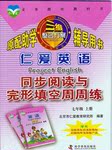题目内容
| When coal burns, it g heat.
|
| generates |

 百年学典课时学练测系列答案
百年学典课时学练测系列答案 仁爱英语同步练习册系列答案
仁爱英语同步练习册系列答案When coal is burned in a boiler, two kinds of ash by-products are produced: a heavy bottom ash and a fine-as-powder fly ash. About 10 to 15 percent of the coal by-product is bottom ash which is used like sand on streets and highways covered with ice, and also on highways as paving material.
It is the fly ash, however, that is receiving much attention. Once considered a waste, fly ash is now regarded as a natural resource in the United States. It can be placed in some lower places, where it is compacted and covered with soil, for the seeds of various grasses and plants to be placed in the soil to make the land productive.
Fly ash may be added to concrete to build roads and other kinds of buildings, taking the place of the cement up to 20 percent. As a by-product of burned coal, fly ash requires no extra energy to be produced, while cement production requires great amounts of energy.
Besides, the technology is able to take out some useful minerals from the fly ash, which is still a very expensive process today. But the time may come when it is cheaper to take out these products from ash than to mine new supplies.
1. The bottom ash can be put on icy streets________.
|
A.in order to rebuild them |
B. in order to make them colourful |
|
C.so that people can walk on them |
D.so that cars can run faster |
2.The fly ash_______ bottom ash.
|
A.has the same use as |
B. is more expensive than |
|
C.has more uses than |
D.is much cheaper than |
3.The fly ash can be used to________.
|
A.grow various plants |
B. take the place of soil |
|
C.cover productive land |
D.make more productive land |
4. Which of the following is right?
|
A.To produce fly ash, some extra coal is to be burned. |
|
B. Fly ash is made while producing cement. |
|
C.It takes less energy to produce fly ash than cement. |
|
D.Fly ash is a costless by-product. |
5.The word “mine” in the last sentence of the passage means_______.
|
A.to buy things from other countries |
|
B. to search for useful materials in the mountains |
|
C.to dig deeply into the ground to get useful materials |
|
D.to take out certain materials from other things |